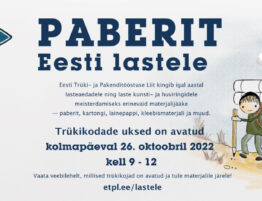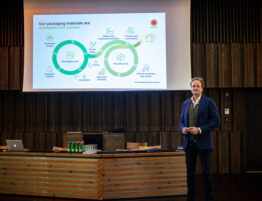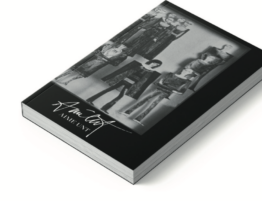
An article by Kati Rostfeldt, innovation advisor for Estonian printing and packaging industry
Parliamentary elections were held in Estonia on 5 March 2023. We can already now say that sustainability will be one the key focus areas of Estonian new government, affecting long-term economic and industrial policies.There is a clear expectation for the European packaging industry to considerably increase their investments in sustainability. Estonian packaging manufacturers also agree that changes are inevitable. To assess the readiness of our companies in constantly changing environment, we, the Association of Estonian Printing and Packaging Industry, convened a round table in February. We mapped out the biggest challenges related to the green transition of Estonia’s packaging industry and sought for possible solutions.
Packaging manufacturers have already invested significantly
Estonian packaging manufacturers have constantly been working on increasing their cost efficiency for the past 10 years and today we can say that several goals have been reached on the path of becoming sustainable. Over the years, our companies have invested in resource-efficient production, many use renewable energy, recycle generated production waste, comply to various green certificates, and calculate their packaging footprint. But, what will the future bring?
Change is co-created
Every production company is probably aware of the forthcoming regulations regarding CO2 footprint and many have taken steps to calculating their own CO2 emissions. In the packaging industry, it is important to emphasise that 95% of the packaging footprint is formed by the brand owner’s choice, i.e., the choice of packaging material and packaging design. There are many different algorithms for calculating the size of the product footprint and different calculators also give different results. Estonian packaging manufacturers have mostly adapted the model that calculates CO2 footprint from cradle to gate. This model considers raw material, production processes and transport (from producer to client) and is generally well controllable throughout the entire production chain. Today’s calculations show that the footprint of a packaging manufacturers’ production process forms around 5-7% of the end product’s CO2, the remaining 93-95% comes from the used raw material and transport emissions.
Raw material industry is very energy-intensive and the biggest influencer of the product footprint. Thus, the size of the product footprint is decided by the customer’s choice. Sustainable choices can be evoked by European Union regulations and unified statutory requirements for raw material use. Not all raw material producers provide enough information about their production emissions, and therefore correct CO2 calculations for end products are not always available. It is even more difficult to make calculations for cradle-to-grave product life cycles, because as soon as the product leaves a controlled system, to the hands of end consumer, it is no longer possible to monitor the packaging or predict the end of its life. As manufacturers, we can assume that if a recycling system for packaging is available, then every package will end up there, but these control mechanisms remain outside the scope of the packaging manufacturers. Effective waste management and sorting is a prerequisite for better end consumer behaviour. Manufacturers of plastic packaging are ready to start using more sustainable homogeneous material, but it depends on the end users willingness to pay more for this kind of products and appropriate waste management system is also necessary. In conclusion, to reduce the footprint, we need to understand that change is co-created across the entire value chain and in cooperation between many different parties.
As an association for packaging companies, we see the need for unifying of sector-specific CO2 footprint calculators (including the need for evidence-based and control mechanisms) and we consider cradle-to-grave lifecycle footprint calculation to be an unreasonable reporting obligation for the manufacturer, as packaging manufacturers cannot obtain all the necessary data. The manufacturing company can fulfil this obligation only based on data created by themselves and from its production process – from gate to gate (or to the customer if the manufacturer also offers transport). We also must consider that, as a production service provider, the company can operate in a very environmentally sustainable manner, but if the company’s footprint is affected 95% by the client’s choice of packaging material and product design, then this may force some companies towards greenwashing and compensating their emissions by various alternative methods in carbon offsetting.
Single-use or reusable packaging
It is still somewhat unclear how the EU green transition targets for reusing packages is going to shape the future of the industry. What are the exact requirements and restrictions that will apply, for example, to food packaging, and how will the transitions to reusable packaging be resolved in large volumes.
We have several reusable packaging initiatives in Estonia, but their operations are somewhat in a start-up phase and therefor lack sufficient transparency to draw any adequate conclusions applicable to industrial volumes. This problem is most critical in the food contact packaging. Questions that arise considering today’s initiatives and await solutions are:
• how to monitor the cycles of reuse?
• how high will the return rate be?
• how to organise the food safety control?
• how to store, collect, etc. re-usable packages in large industrial volumes?
Packaging manufactures suggest that reusable packaging should first be implemented in controlled systems. We can consider an industrial production chain and/or the closed loop system of a restaurant as a controlled system. As soon as packages leave the controlled system, i.e., in the hands of the end consumer, it is no longer possible to check or monitor the proper use of the products. When the consumer takes food containers home, we no longer know what is put in the containers, how they are stored and whether they will be returned. The material properties of plastic containers depend, for example, on the temperature, which will affect food safety. With the material knowledge we have today, plastic packaging should be collected for recycling, and not for reuse.
When produced, reusable packaging has a larger CO2 footprint than single-use packaging due to its greater mass and the activities associated with reuse. It sets a certain number of reusing cycles for each package, so that the result would be more sustainable and with a smaller footprint on the environment. If the return percentage for reusable packaging will not reach over 95%, then this raises a question about the initial goal of a smaller environmental footprint.
At the same time, reducing the weight of current single-use packaging, implementing smarter design together with the right use of material has proven itself as a viable alternative to consistently reduce the footprint of packages on the market. The industry itself sees the solution primarily in the efforts of making packaging from homogeneous materials simultaneously with the development of more efficient collection and handling of different types of waste.
Deposit refund systems for plastic bottles are successfully implemented in many countries. Similar future is envisioned also for reusable packages. Today, the return rate of bottles in Estonia is less than 90%, what seems a high number, but still more than 10% of the bottles are lost, ending up in mixed household waste or remains in the hands of the consumer (in the worst case, ends up in the forest or our water bodies). In terms of food safety, the plastic bottles are recycled, not reused. A considerable percentage of the bottles come from among the garbage, and this model cannot be used for plastic containers that are meant for reuse in food packaging. In addition, the packaging that meets all food safety requirements and offers maximum reusability has a high cost. How much of a family’s budget can be stored under deposit containers in the future? Is this kind of mass handling of packages sustainable?
We sometimes tend to forget the reason why our food handlers have such strict requirements. The entire process of food contact must comply with food safety rules and be easily traceable. Companies are used to operating within the agreed legal framework and are ready to invest in updating their packaging production processes and bringing them into compliance with regulations. This is standard business logic for manufacturing companies, and Estonian packaging manufacturers are ready for green investments as well. But we must consider what are the biggest bottle necks in making this transition happen. The main challenges lie in the final phases of a product life cycle, which primarily concerns the behaviour of the end consumer and waste management.
The global waste problem is also connected to the fact that packages have left the controlled system to the hands of the consumer and the consumer has not handled waste correctly. If countries are unable to solve this problem, the life cycle of neither single use nor reusable packaging will essentially become more sustainable. Consumers largely base their actions on convenience and awareness, and today we lack unified understanding on how to raise both and fit reusable packaging into the existing operating systems.
We have solutions
Over the years, packaging made of paper, cardboard and corrugated cardboard has already proven itself to be 100% recyclable, and the target rates for paper recycling in Estonia have also been high for decades. Today, companies producing paper-based packaging are investing in new innovative technologies to remove and separate plastic from cardboard packaging, thus enabling 100% bio-based recycling.
The recycling of metal packaging has also a high rate because of the price and demand of the raw material. Innovation in the metal industry and smart design solutions are moving fast in the direction where metal becomes one of the most competitive alternatives next to glass and plastic packaging.
Estonian plastic packaging manufacturers are already capable of producing packaging from monomaterials, but we still lack the ability to sufficiently collect plastic waste and process it reasonably. In other words, the problem that needs to be solved for plastic packaging lies in the collection and recycling of the material. Monomaterials are not suitable for replacing all plastic packaging in use. In this case, the smallest footprint is to use plastic packaging with the lowest possible mass. Here for example, pyrolysis technology, during which plastic waste is broken down into oil, is well suited for recycling mixed plastic waste. Like petroleum, oil is suitable both for heating and as a raw material for new polymers. However, it is always necessary to consider the end consumer and what is the reasonable cost for product packaging. Many innovative solutions are not yet possible to implement due to the unreasonably high price.
Therefore, Estonian packaging manufacturers consider it reasonable to start reducing packaging waste starting from material reduction, using homogeneous raw material, and not thoughtlessly replacing it with alternatives whose footprint and environmental impact have not been properly assessed. In the case of reusable packaging, we advocate increasing the reuse of transport packaging, especially in closed and controlled loops, for example within large companies or in specific industrial supply chains (before the product reaches the end consumer).
Manufacturers agree on the need to avoid greenwashing and say that compensation for the company’s carbon emissions should be clearly distinguished from the product’s footprint. When products with a negative footprint start to enter the market, it creates confusion and further reduces the responsibility of end users for sustainable consumption and waste management.
As an association of packaging companies, we want to emphasise that companies cannot base their business operations only on the goals of the European Union, specific laws are needed to establish a clear action plan and offer companies time to adapt. If restrictions change current business models, it must be done in law. If we in Europe have collectively decided to reduce greenhouse gas emissions, companies are waiting for well-thought-out decisions on what and when must be done. We want to avoid a situation where green transition done hastily, without thinking through, only comes down to increased reporting obligations for companies. We all want to see the real change, not unnecessary bureaucracy. For this, we need a fact based plan that would give entrepreneurs the necessary assurance to make green investments that bring true change.
Katre Savi and Kati Rostfeldt from the Association of Estonian Printing and Packaging Industry met with Estonia’s leading packaging manufacturers in February to have a round table discussion about the industry’s readiness related to EU green transition.
Companies that participated in this meeting:
Andres Kull, Kroonpress AS
Martti Lemendik, Metaprint AS
Igor Rostsinski, DS Smith Packaging Estonia AS
Boris ja Mihhail Tsernjak, Multipakend Tootmine OÜ
Raul Rumm, GPI Estonia AS
Meelis Jürgens, Estiko Plastar AS









